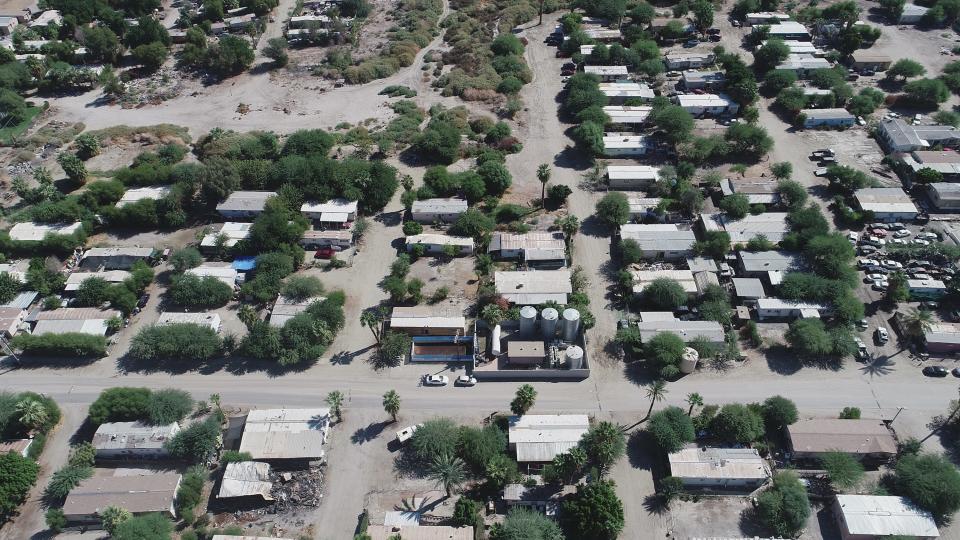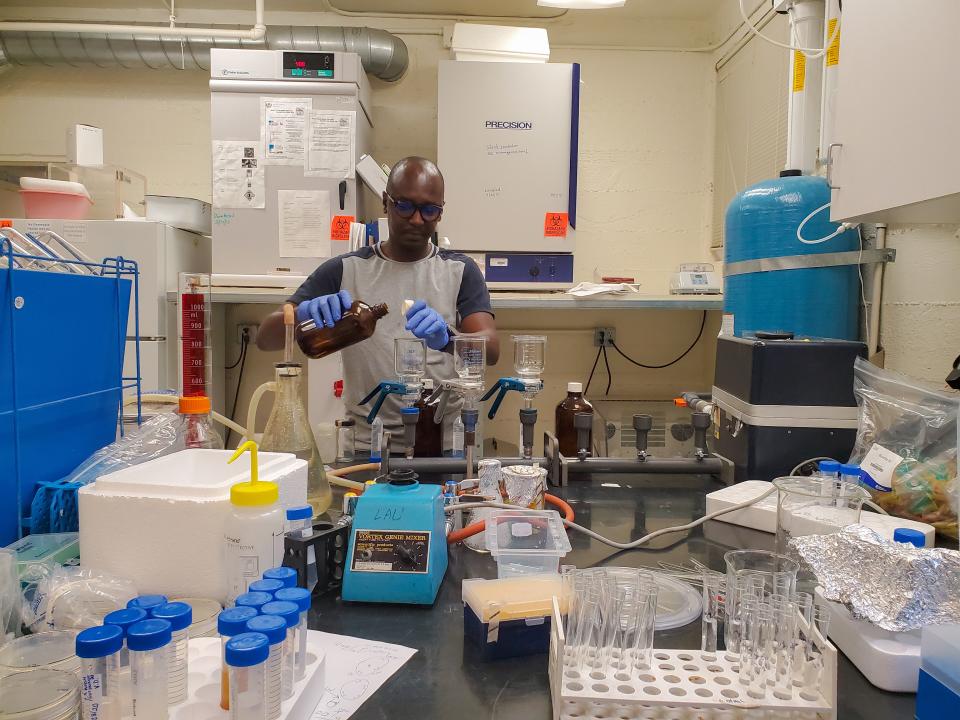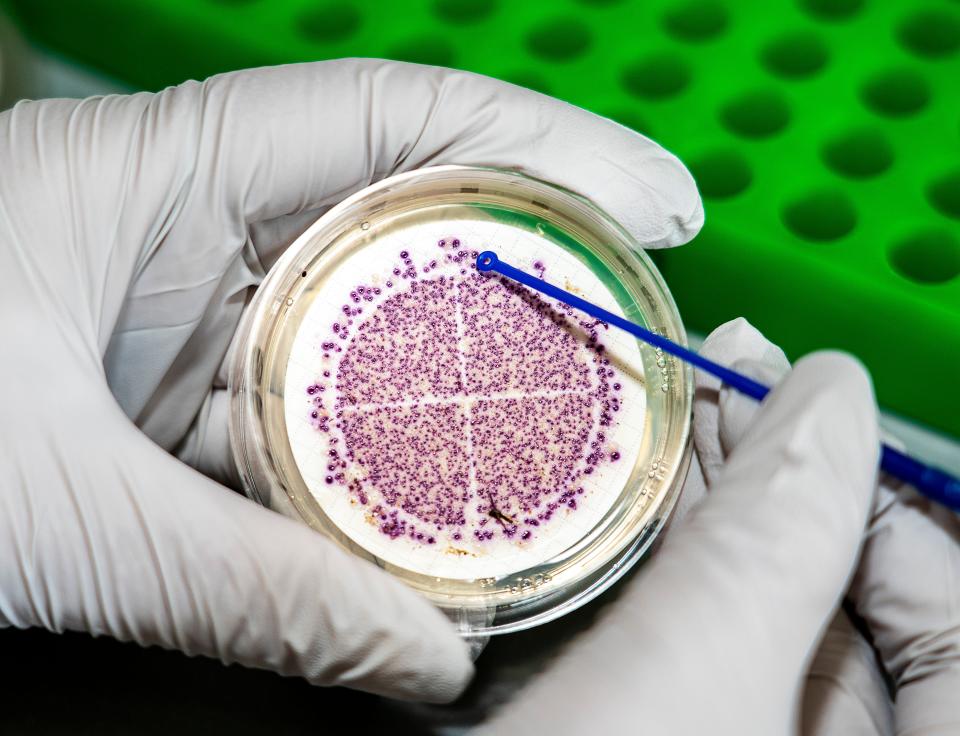'Overlooked' problem of bacteria in fast-food soda fountains. How risky is that drink?
Scientists in Southern California are asking the kind of questions that make soda drinkers uneasy after a recent study that found fast-food soda fountains were serving up high levels of bacteria along with self-serve drinks.
Researchers from Loma Linda University found bacteria levels that surpassed U.S. Environmental Protection Agency regulations for drinking water at fast-food restaurants in the eastern Coachella Valley, where largely low-income, Latino farmworker families have struggled with accessing potable water.
Communities in the desert region about 2 ½ hours east of Los Angeles have experienced water pollution identified by federal officials. Water sampled in local fast-food restaurants had bacteria such as E. coli, salmonella and Pseudomonas aeruginosa that can cause severe illness.
The study, published in August in the journal Drinking Water, found more than 40% of water samples from fast-food soda fountains had coliforms present, an indicator of contamination. The study calls into question the sanitation and maintenance of water from soda fountains, which rely on government and manufacturer standards.
The study only looked at this one small area, but a larger question loomed for the scientists.
“We cannot say that soda fountain contamination is only in the eastern Coachella Valley,” Thomas Hile, a researcher affiliated with Loma Linda and the lead author of the study, told USA TODAY. “It’s a general problem that I believe is kind of overlooked.”
The Loma Linda team was not the first to discover this problem. In fact, researchers had looked into the public health risks at fast-food soda fountains more than a decade earlier and made similar discoveries.
Representatives of the restaurant industry said they're following the standards in place. Health officials wouldn't say if they thought the standards should be revised to prevent the spread of disease at soda fountains.
USA TODAY Series: America can prevent (and control) Type 2 diabetes. So why aren’t we doing it?

From hunger to intrigue
The discovery of the bacteria came about somewhat coincidentally. Hile and Ryan Sinclair, an associate professor of environmental microbiology at Loma Linda and a study co-author, were collecting samples of tap water at the nearby Oasis Mobile Home Park. The EPA has cited toxic levels of arsenic in drinking water for Oasis residents, and officials said the mobile home park's wastewater system was at risk of contamination from E. coli and other disease-causing organisms entering its drinking water.
As an alternative to tap water, the two researchers were sampling vending machines that dispense water into large jugs that many residents used in their homes. Afterward, the research partners got hungry and stopped at a fast-food restaurant. The scientists declined to name the chain, though Hile said he ordered a burger, Coca-Cola and coffee. Sinclair wondered, while they ate, about the cleanliness of the soda fountain drinks, prompting Hile to add restaurant soda fountains as another source for trailer park residents where they might seek alternative water.
In total, researchers collected more than 70 water samples from soda fountains, vending machines and taps. Collecting water samples, they found traces of salmonella, Pseudomonas aeruginosa and E. coli, among other bacteria in all three water supply sources. Such waterborne pathogens, particularly Pseudomonas and E. coli O157:H7, have been known to cause severe gastrointestinal and respiratory illnesses, hepatitis and death.
Researchers said biofilms – a collection of organisms, like slime, that stick together and to surfaces – likely develop in water distribution systems, which are made of plastic piping. This kind of piping is an ideal environment for biofilm growth and bacteria to develop, they said. They determined, that because of this sticky material, the filtration systems for vending machines and soda fountains appear inadequate to prevent people from drinking contaminated water.

Water vending machines and soda fountains, researchers said in their study, had “microbial contamination above limits set by the EPA.”
Local tap water sources were likely sources of contamination, but the study pointed to plastic piping used to connect water vending machines and soda fountains to tap water systems that allow for biofilm to grow. Filtration systems in vending machines and soda fountains are "insufficient to prevent consumers from drinking contaminated water," researchers wrote. Additionally, they found, that nozzles were another area where biofilms were likely to form. They took nozzle swabs that showed bacterial contamination, which they said is especially likely in hot summer weather.
Leprosy risks: How is leprosy spreading domestically in the US? Some experts point to armadillos.
How widespread is contamination?
Still, it’s unclear how widespread the issue is, or the broader risk of risk of coliform presence in drinking water.
“It’s a concern that they found these pathogens,” said Joan Rose, a microbiologist and the Homer Nowlin Endowed Chair in Water Research at Michigan State University, who was unaffiliated with the study. “It’s clearly an indicator that we need to do more investigations like this. We just don’t know how big the threat is.”
The groundwork was already in place for studying the public health risks associated with soda fountains. A decade ago, researchers from Hollins University identified microbial contamination in soda fountains during a one-year study in Virginia. In their article in the International Journal of Food Microbiology, they pointed to the lack of regulation of the tubing used in soda fountains and the lack of inspections of the beverage delivery systems or the beverages themselves.

Sinclair, the Loma Linda professor, acknowledged that risk assessment is needed to better understand whether these drinking machines pose to human health. While a study is forthcoming on risks posed by bacteria identified, Sinclair and Hile said their results build on scientific findings across the country in Virginia.
The bacteria samples from soda fountains should give consumers, especially those with weakened immune systems, and the fast-food industry pause, researchers said.
“If that was in tap water," Sinclair said, "there would be all sorts of alarms that go off."
Standards in place for food safety
In a statement, Patrick Guzzle, vice president of food science at the National Restaurant Association, an industry group, said federal regulations from the Food and Drug Administration's Food Code require soda fountains be cleaned just like any area with food contact. He called on staffers to comply with manufacturer instructions for sanitizing.
However, Guzzle suspected issues in the recent Loma Linda study had more to do with tap water quality issues in the eastern Coachella Valley.
“We know that the area is an environmental justice site – meaning that it presents specific environmental health concerns to all members of the community,” Guzzle said. “We encourage restaurant operators to work with their suppliers to know and understand the best ways to clean and sanitize all food contact surfaces in accordance with the food code and prevailing local statutes, regulations, and policies.”
In Riverside County, which encompasses the Coachella Valley, officials at the county Department of Environmental Health said California law regulates restaurant water sources, and county specialists conduct routine inspections to ensure retail food facilities operate safely and cleanly to prevent disease. The state Department of Public Health, meanwhile, oversees water vending machines in California. State officials said the department doesn't comment on studies it didn't author.
“Restaurant owners/operators whose soda fountains tested positive for total coliform must immediately thoroughly clean and sanitize the unit,” Kristin Lorge, deputy director of the Riverside County Department of Environmental Health, said in an email. “Soda fountains, like all food contact surfaces, must be properly cleaned and sanitized to prevent food contamination and the incidence of food/waterborne illness.”
Loma Linda researchers recommended greater surveillance and regulation around soda fountains at fast-food restaurants and water vending machines. They suggested restaurants use antimicrobial tubing, akin to the material used by dentists, and urged regular cleaning to reduce bacteria from growing.
Unless regulations change, customers like Hile, the study author, must rely on the workers at their favorite fast-food joints to scour the equipment before they push for their soft drink of choice. Hile says that's a risk he's not willing to take.
Eduardo Cuevas covers health and breaking news for USA TODAY. He can be reached at EMCuevas1@usatoday.com.
This article originally appeared on USA TODAY: Salmonella, E-coli found in fast food soda fountain drinking water

